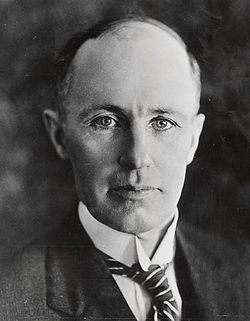13th Canadian Ministry 13e conseil des ministres du Canada | |
|---|---|
| 13th ministry of Canada | |
 | |
| Date formed | 29 June 1926 |
| Date dissolved | 25 September 1926 |
| People and organizations | |
| Monarch | George V |
| Governor General | Viscount Byng Marquess of Willingdon |
| Prime Minister | Arthur Meighen |
| Member party | Conservative |
| Status in legislature | Minority |
| Opposition party | Liberal |
| Opposition leader | William Lyon Mackenzie King |
| History | |
| Legislature term | 15th Canadian Parliament |
| Incoming formation | King–Byng affair |
| Outgoing formation | 1926 Canadian federal election |
| Predecessor | 12th Canadian Ministry |
| Successor | 14th Canadian Ministry |
The Thirteenth Canadian Ministry was the second cabinet chaired by Prime Minister Arthur Meighen. It governed Canada from 29 June 1926 to 25 September 1926, including only the last three months of the 15th Canadian Parliament, all cabinet ministers were acting cabinet ministers as Meighen hadn't been given the confidence of the house, and any cabinet ministers appointed by him would have had to resign their seats and run for re-election. [1] The government was formed by the old Conservative Party of Canada. Meighen was also Prime Minister in the Eleventh Canadian Ministry.